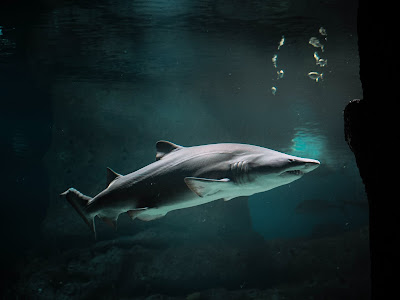shark
Sharks (mouse fish; ghost shark) include cartilaginous fish, a group of over 11,000 species, of which more than 400 are sharks. Most of these species are characterized by slow growth rates, delayed age at maturity and low fertility compared to bony fish. These parameters translate into a limited capacity to resist the stress of hunting and a longer period of return to normal conditions of overfishing.There may be sustainable fisheries, but they need to be managed carefully, with no major results expected versus permanent. For centuries, fishermen have built sustainable sharks in coastal waters. The increase in fishing efforts and the extension of fishing areas in recent decades have raised concerns about the consequences of the collection of certain types of sharks in many oceans of the world. Many types of exploited sharks are retreating, and national legislation and international treaties have imposed protection on many due to their low maintenance status.
Sharks are hunted mainly for their meat, fins, skins, cartilage and liver. Shark meat is a component of the diet in many developing countries. The meat of certain types of fish is also distinguished by its high value in certain developed countries. Shark fins are the most valuable shark product and are used in the preparation of traditional shark fin soup, a delicacy in Chinese culture. Shark skin is consumed in many countries in Asia and Oceania after boiling it in water and removing its scales.
However, the most important use of shark skin is the leather industry. Shark cartilage is also used in the food industry, but its biggest cartilage market is pharmaceuticals. Shark liver is mainly used to extract oils and other carbohydrates that have been used in a wide variety of industries throughout history. Shark products are marketed merchandise. The value of world trade in shark products is around $ 1 billion per year.
World catches reported to the FAO since 1950 have tripled to their highest level in 2000, when they reached 888,000 tonnes. However, we can note that the catch decreased by about 11 percent (790,000 tonnes) in 2014. Although an explanation for the latter cannot be provided, there are some general factors which may have contributed to varying degrees and by connecting in different ways,Depending on the type of fishing and the geographic area, in these developments. Conservation measures were first taken in many national and regional fisheries management, these measures, if implemented, can reduce the mortality of sharks and avoid their bycatch and thus reduce the size of the catch. Second, catches decrease in many cases unintentionally and due to the general decline in the abundance of exploited sharks; this leads to a drop in yield even if fishing operations remain unchanged or even increased.
Sharks have the same five senses as humans. as sharks can see in deep areas where there is almost no light, due to the structure of the shark eye which contains a membrane at the back of the eye. This membrane is similar to the membrane in the cat's eyes, so it can see in low light .



















0 comments: